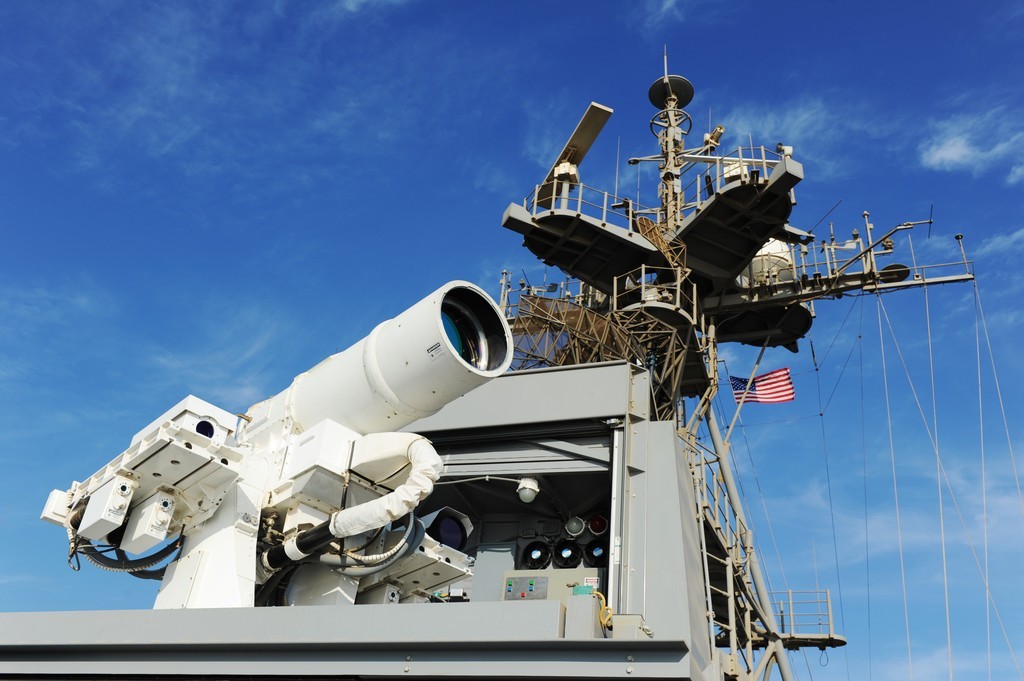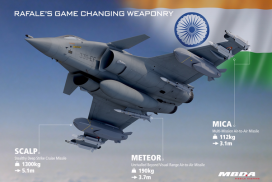Lockheed Martin’s experts have revealed details of directed energy and laser weapon system programs.
Directed energy and laser weapon systems are a proven solution that effectively addresses tech-driven threats with more accurate, flexible and affordable performance than offered by traditional ballistics.
“They’re designed to be precise, to yield minimal collateral damage and, in essence, offer an endless magazine,” said Dr. Rob Afzal, Lockheed Martin senior fellow, Laser and Sensor Systems. “As long as you have power, you can shoot—that’s a critical capability when you have to take on a large number of low-cost distributed threats such as a swarm of drones, each carrying a small explosive.”
Today’s directed energy weapon systems have decades of research behind them. Industry leader Lockheed Martin has spent 40 years designing and developing electromagnetic energy systems and elevating their power to create directed-energy defence systems.
Powered by batteries, generators or pre-existing power sources, Lockheed Martin’s technology is a Spectrally Beam Combined fibre laser—small, powerful and extremely accurate. It uses beam-control optics and software algorithms to focus a stream of multiple kilowatt fibre lasers into a single high-quality beam.
The energy travels via mirrors, lenses and windows and can be adjusted for any atmospheric distortions on the way to its target. Normal ballistic challenges such as wind and gravity aren’t a factor, and the beam can disable a truck engine, burn through a rubber boat or bring down a drone.
“You can’t actually see the laser light, it’s invisible. The enemy wouldn’t know where the laser is coming from, they wouldn’t be able to target back. Of course, lasers travel at the speed of light,” said Sarah Reeves, vice president, Missile Defense Programs at Lockheed Martin.
Directed energy weapons’ unique characteristics change the defense equation both tactically and financially. Troops in the field needn’t worry about transporting heavy ammunition. The “ammunition” is merely the power supply, and the magazine is limitless. Their stealthy operation makes them ideal for surprise engagements—the enemy never sees it coming—and they can track and eliminate targets at both short- and long-range.
And as the Patriot missile incident illustrates, directed energy weapons offer huge potential cost savings and value-added in any tactical scenario. Traditional weapons cost thousands or millions of dollars per shot and are limited by availability. As long as they have power available, laser weapons are infinitely renewable.
“The upfront cost is offset by the fact that the energy source, be it fuel, oil or a nuclear reactor, is often already in place,” Afzal said.
But laser weapon technology is meant to complement existing defense platforms, not replace traditional kinetic ballistic systems.
“They’re designed to act as an additional layer of defense that provides an advantage as they protect troops and critical assets,” said Reeves.
Lockheed Martin is ready to deploy and integrate directed energy technology by 2021. It’s the first company to bring laser weapon systems out of the lab and put them into the hands of soldiers, sailors and warfighters across all branches.
“It’s time for these systems to start moving into the field,” said Steven Botwinik, director, Sensors & Global Sustainment Advanced Programs at Lockheed Martin. “They’re ready now.”
Lockheed Martin’s research and development experience provides the knowledge needed to integrate such weapons across every defense platform.
“There are obviously different priorities for each branch,” Reeves said. “All of the services have the same need to find a target and defeat it—and the fundamental technologies are the same—but there are differences in how they might apply them in terms of tactics and target sets.”
Lockheed Martin’s ATHENA system, which is a prototype transportable, ground-based system designed to defeat close-in, low-value threats, is helping transform other defense platforms. The company provides the laser weapon system for the U.S. Navy’s HELIOS program, which has been retrofitted for a DDG-51, and delivers key subsystems for the U.S. Air Force’s SHiELD program, an aircraft-mounted high-power laser.
“We can put our laser weapon system into any existing architecture. Our systems are being designed to plug and play into any military system,” said Reeves.
Once implemented, directed energy weapons will become a defensive norm.
“We excel not only at efficiently producing tactical electro-optical systems like these but also sustaining them over time,” Botwinik said. “We’re building laser systems that must be able to perform repeatedly in war-fighting environments. We have the logistics and sustainment experience to maintain these systems anytime and anywhere in the world, for years and decades to come.”




